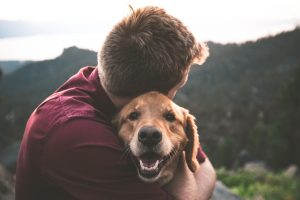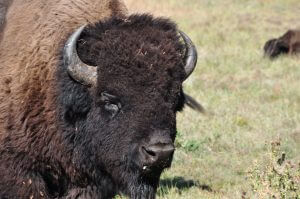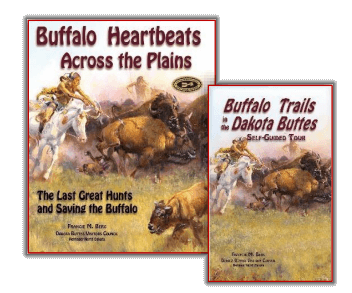

Blog List
Pablo’s Great Buffalo Roundup and Grand Shipment – Part 1. Pablo’s Grand Buffalo Roundup
by Francie M. Berg | Jul 14, 2020
When Michel Pablo sold all of his buffalo to the Canadian government, it took 6 years to get them rounded up and loaded. He expected the job to take one summer.
They were wild, and did not take kindly to being chased to the railway station in Ravalli, Montana—or getting loaded into railway cars. Especially the renegade bulls.
Pablo’s buffalo—he thought there were somewhere between 300 and 700 head—were grazing in the Bitterroot Mountain Range and the Lolo National Forest along the Flathead River.
The Buffalo Hunt: The History and Culture of the Spirit Lake Dakota
by Louis Garcia | Jun 30, 2020
For the Plains Indian nothing is more exciting and exhilarating than hunting buffalo or more enjoyable than feasting on their flesh.1
To the Plains Indian the buffalo was the source of life; this bovine scientifically called a Bison (Bison bison) provided everything required to exist in a plains environment. Every part of the buffalo was utilized including their excrement which was used for fuel.
The Dakota term for a buffalo hunt is Wanasapi which appears to be contraction of a descriptive name. During the period named Dog Days, before the coming of the horse, when dogs were used as burden carriers, the hunt was more individualized.
American Serengeti—What is going on in Montana?
by Francie M. Berg | Jun 23, 2020
In northcentral Montana an enormous wildlife project is taking shape in a bold new way that is shaking the foundations of community development and progress—to bring about what has been called the American Seringetti.
Part 2. Return of Wild Buffalo to Banff National Park
by Francie M. Berg | Jun 16, 2020
By January 2019, the buffalo at Banff had been free-roaming for 5 months, after being released from their small enclosed pasture in the remote Panther Valley. They are being tracked and monitored by the Banff bison scientists with the help of GPS collar data, remote cameras and field observations.
Part 1: Returning Wild Buffalo to Banff National Park
by Francie M. Berg | Jun 9, 2020
For over a century, Parks Canada has been leading the charge to restore wild bison in Canada.
One of its first ventures was the display buffalo herd placed in a small 300-acre paddock near Banff in 1885.
Canada’s oldest national park—Banff National Park—is near the mountain resort of Banff and Lake Louise.
The scenery is spectacular, with rugged mountains rising on every side. The tree line is at about 2,134 m (7,000 ft), and above this is mostly rocks and ice.
Unlike other western mountain towns that focused on mining or agriculture, Banff was built as a tourist destination from the beginning. Planners for the Canadian Pacific Railroad built across Canada in 1885, discovered hot springs there and pronounced it tourist-worthy. The original Chalet Lake Louise was built on the lake shore in 1890.
Part II: Saving the Buffalo from Extinction
by Francie M. Berg | May 26, 2020
Charles Jesse “Buffalo” Jones started out as a commercial hide hunter on southern buffalo ranges.
His life adventures took him from his home in Kansas to the frozen Canadian North and the steaming jungles of Africa.
He prospered and suffered as a farmer, buffalo hunter, town developer and rancher. An expert roper, he captured calves in Texas and New Mexico. And, as a friend of President Teddy Roosevelt through the new American Bison Association, he was appointed as the first Superintendent of Yellowstone Park, in charge of restoring that depleted buffalo herd.
His greatest contribution was—not only capturing and raising a profitable buffalo herd—but finding ways to buy and sell buffalo and ship them across North America to help start new herds.
As a child, Jones caught and tamed small animals. He made his first money by capturing and selling a squirrel. That “transaction” Jones said “fixed upon me the ruling passion that has adhered so closely through my life.”
Jones said that he conceived his buffalo rescue plan in 1872.
He said he had killed “thousands of buffalo” in his hunting days and he regretted it.
“I am positive it was the wickedness committed in killing so many that impelled me to take measures for perpetuating the race which I had helped almost destroy.”
Filled with remorse, he set aside his big buffalo rifle, gathered some of the last wild buffalo calves and committed himself to helping the buffalo survive and thrive throughout North America.
He bought buffalo from as far north as Winnipeg in Canada and sold buffalo across the North American continent to help get parks and private owners started.
According to Ken Zontek, in Buffalo Nation: American Indian Efforts to Restore the Bison, during the last days of the wild buffalo, Buffalo Jones and his assistants went four times out to the buffalo ranges from his ranch near Garden City, Kansas, down into the Texas Panhandle, and captured 60 buffalo of all ages. Not all, however survived, or made the trip home.
Part I – Saving the Buffalo from Extinction
by Francie M. Berg | May 19, 2020
Clearly, the buffalo were headed for extinction. No one seemed to care.
The “bottleneck”—as it’s been called—drew even closer each year after the last great buffalo hunt on the Great Sioux Reservation in 1883.
The low point came in the 1890’s, or perhaps later, around the turn of the century. That was when the “safe and protected” Yellowstone Park herd, estimated at 200, was suddenly decimated by poachers seeking trophy heads.
Fewer than 25 buffalo, well hidden in remote and rugged canyons, survived that slaughter in Yellowstone Park.
The species was nearly choked off completely at that time. Even the few hundred remaining seemed destined to dwindle.
William Hornaday voiced his despair over the buffalos’ nearly-inevitable extinction in his 1889 book, “The Extermination of the American Bison.” He wrote:
“The wild buffalo is practically gone forever, and in a few more years, when the whitened bones of the last bleaching skeleton shall have been picked up and shipped East for commercial uses, nothing will remain of him save his old, well-worn trails along the water-courses, a few museum specimens, and regret for his fate.”
Hormaday despaired that ‘when the whitened bones of the last bleaching skeleton were picked up and shipped East’ the only memory of buffalo would be trails to water, regret for his fate, and a few specimens in museums. Photo National Park Service.Social Behavior: A Tale Too Marvelous to Go Untold
by Francie M. Berg | May 12, 2020
Buffalo are social creatures. They like living together in herds.
But not just any herd. Their own herd. The one in which they know everyone else intimately. Usually they are relatives. Cows with young calves, still red-gold hair. Buffalo like living in herds of animals that they know. Photo by F.Berg
And not too large a herd—30 to 60 seems a good size.
Except sometimes it’s the “bigger the better.” That happens in late July and August when historically the great herds came together for breeding season.
Professor Dale F. Lott writes that the relationships between bulls and cows become especially intense at that time. But that, however, the intensity is shifting and short-lived.
In his book American Bison: A Natural History, he describes the buffalo’s social behavior as “too marvelous a tale to go untold. The most complex relationships play out.”
It’s true. Who knew those sometimes sleepy-looking animals have such complexity and intensity in their relationships?
Maternal Herds—an older Grandmother Leads
For most of the year, the buffalo sort themselves into “cow groups” or maternal herds and “bull groups.” The Vasquez de Coronado expedition exploring Texas in 1543 reported their surprise in seeing “innumerable herds of bulls without a single cow, and other herds of cows without bulls.” Kansas Historical Society.
The Spanish explorer Francisco Vasquez de Coronado travelled across the southwest as far north as Kansas following buffalo and Indian trails searching for gold. His great expedition of 300 soldiers and some 1,000 Indians often shot buffalo for food, but found no riches.
Buffalo vs Bison– What Shall We Call Them?
by Francie M. Berg | May 5, 2020
What shall we call this magnificent monarch of the Plains—buffalo or bison?
Some people are adamant: the term buffalo correctly refers only to water buffalo in South Asia and Cape buffalo in Africa. We are simply wrong, misinformed, or ignorant to even think of calling the American bison—Buffalo.
Amy Tikkanen, writing in the Encyclopedia Britannica lays it all out. In her world it comes down to “Home, Hump and Horns.” Bison have one set, and buffalo the other.
But not so fast.
Many people who know the science simply prefer the term buffalo. I think most of us in the west—where the buffalo still roam in rather large numbers—do prefer it.
It rolls off the tongue in a friendlier way.
Yes, in scientific usage we agree, it is bison—as is bovine, equine and canine.
My husband Bert, a veterinarian, often used those terms when explaining treatments.
But do we call the cow, horse or dog those scientific names—bovine, equine and canine—in everyday talk?

One happy dog—or is he a friendly canine? Photo by Eric Ward.
Of course not. We don’t even think of them, our beloved friends, that way, do we?
Historic use of Buffalo in America
The word Buffalo actually came from early French fur traders and trappers who called the animals les boeufs, a Greek word for “the beeves” meaning oxen or bullocks.
In that context both names, bison and buffalo, have a similar meaning.
Welcome to Buffalo Tales and Trails!
by Francie M. Berg | Apr 28, 2020
Welcome to our first issue of Buffalo Tales & Trails! Everything you ever wanted to know about buffalo!
Thanks for your interest in buffalo! We are bringing you a combination blog and website.
My assistant Ronda Fink and I have produced books and websites, but never before a blog. So this is more than a first issue—it’s a new venture for us!
But not a new topic. Buffalo are old as the hills in the northern plains. We know them. Yet they are still surprising us with their wild nature and amazing capers.
Our mission is first of all—to help young people get to know and love the magnificent buffalo/ bison—America’s new National Mammal! This means teachers need to be involved.
So this is first of all for teachers and their students! Especially Native American students who have a special awe and pride in their buffalo.
And of course, we invite everyone who has a soft spot in your heart for buffalo. Come along on this incredible journey. We won’t let you down!
You can be an expert of sorts on this very specific subject. It’s a fun topic.

The American Bison became the official National Mammal of the United States on May 9, 2016, when President Obama signed the National Bison Legacy Act. Photo courtesy of SD Game, Fish and Parks, Chris Hull, photographer.
It’s a great milestone for an animal that played a central role in America’s history and culture, helped to shape the lifestyle of Native Americans on the open Plains, and then declined within a hair breadth of becoming extinct.
Today, buffalo live in all 50 states and across Canada, and serve as a symbol of American unity, resilience and healthy lifestyles and communities.
My name is Francie M. Berg. I didn’t know much about buffalo when my husband, a veterinarian, and I moved our family to Hettinger, North Dakota.
Sure I’d seen them in herds here and there, grazing up a green coulee or standing sleepily in a corral.
Much like cattle, I thought. As I said, little did I know.
Where the Buffalo stories Come Together
Then I discovered we’d come to the place where all the buffalo stories come together, now and in the distant past. It happened right here on the western border between North and South Dakota.
This area of the Northern Plains was home to buffalo from ancient times.

Author
Francie Berg

Assistant
Ronda Fink
Subscribe
Sign up today for your
FREE Subscription
to the
Buffalo Tales & Trails
blog.
Click Here
